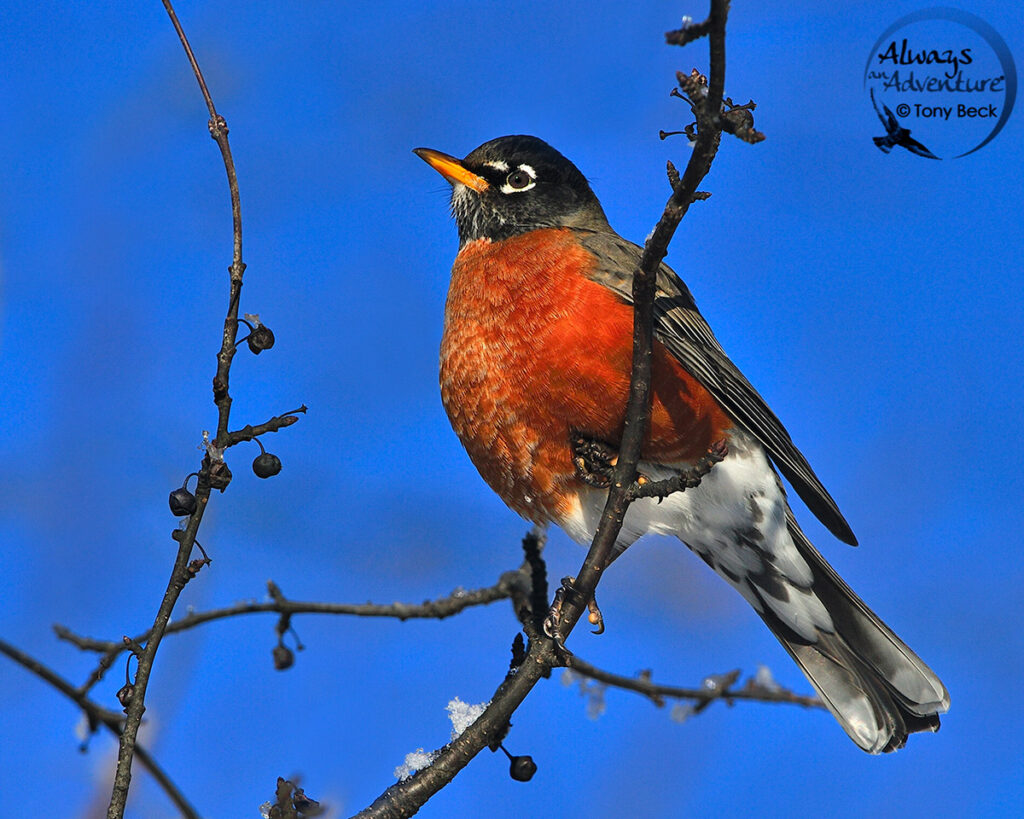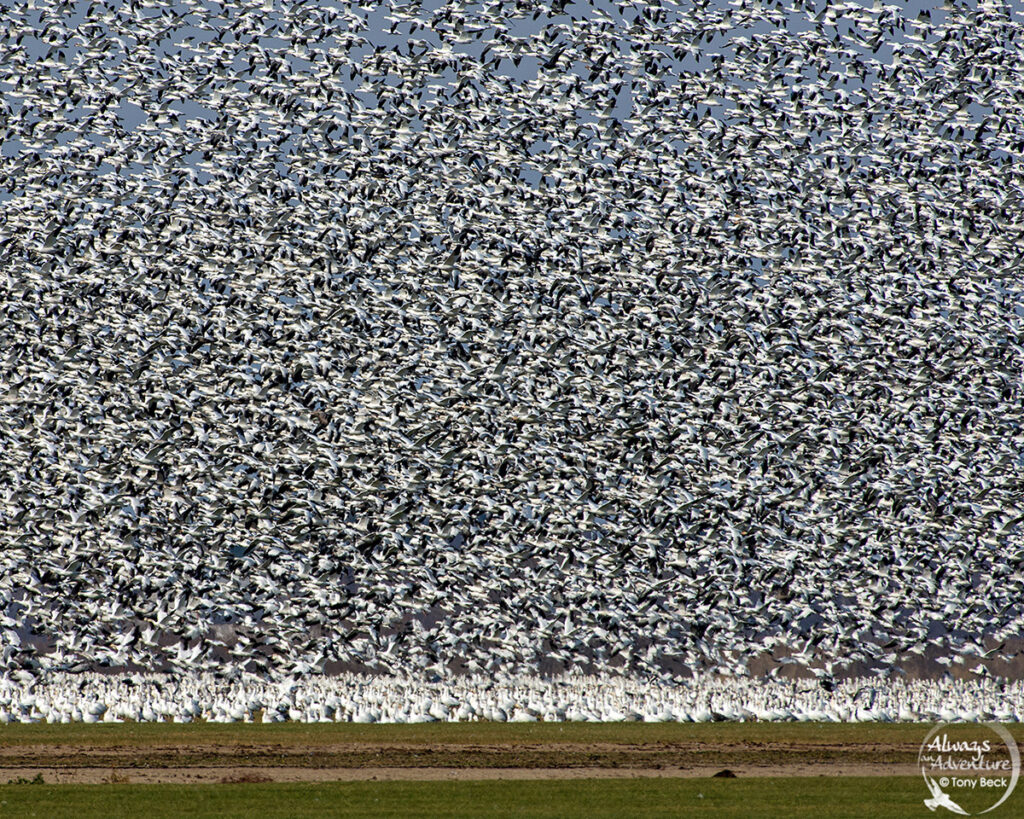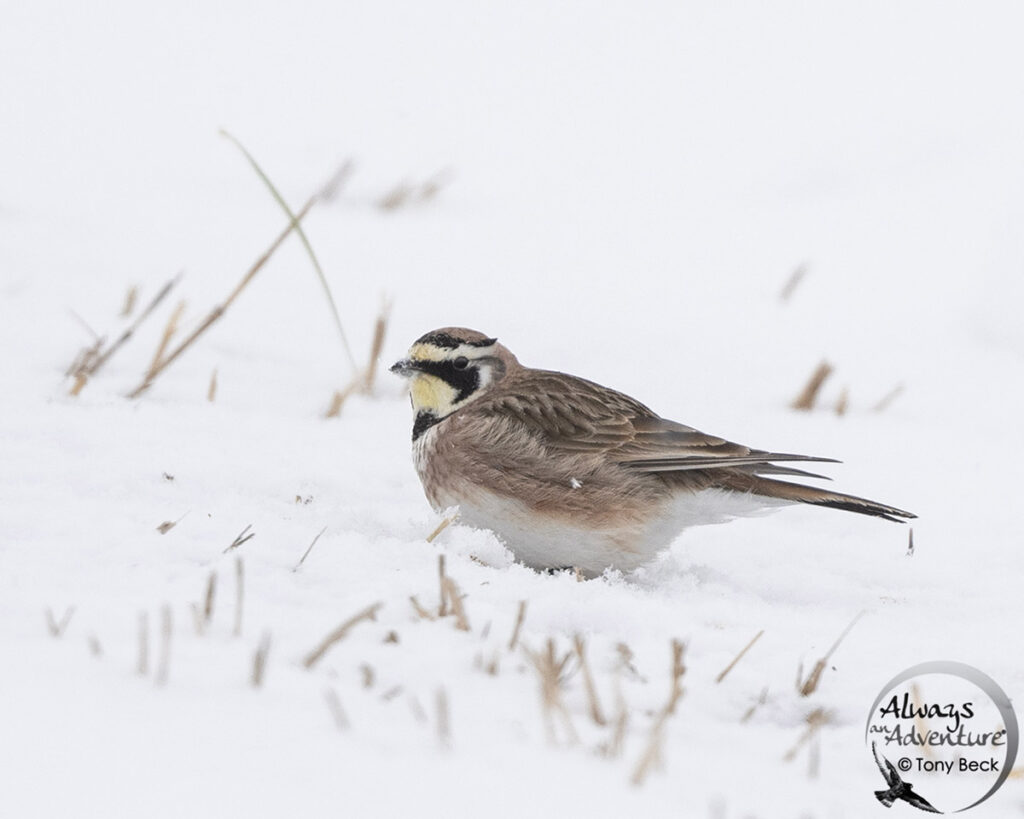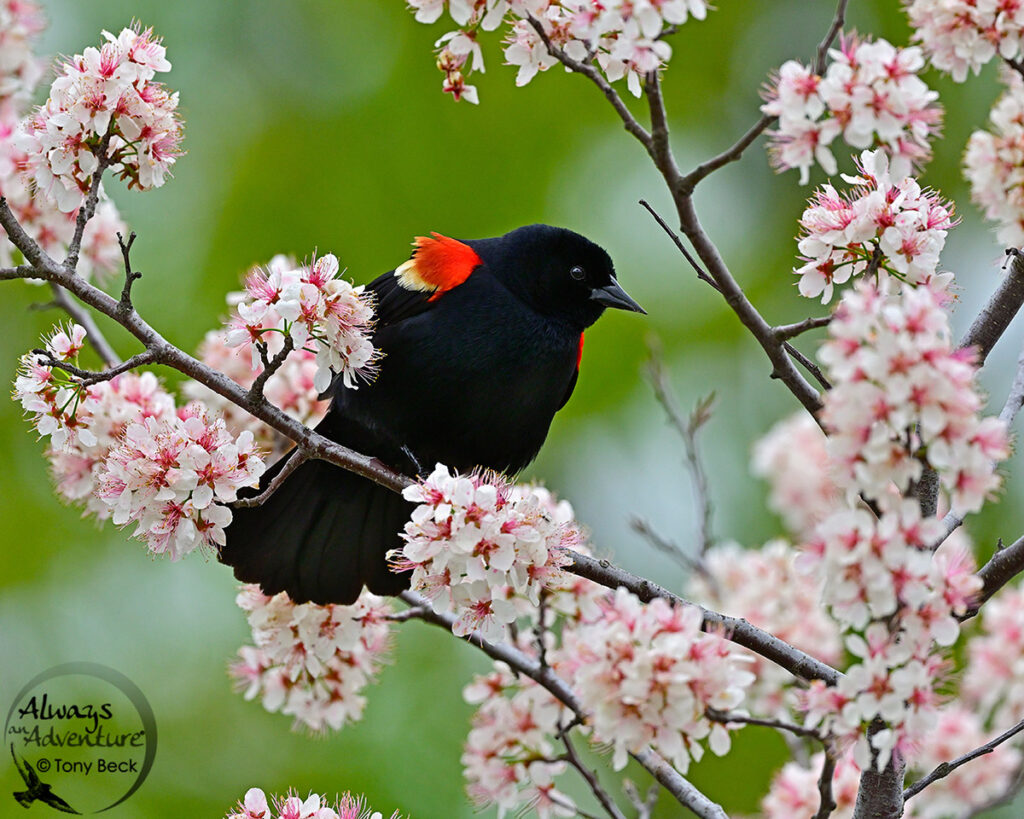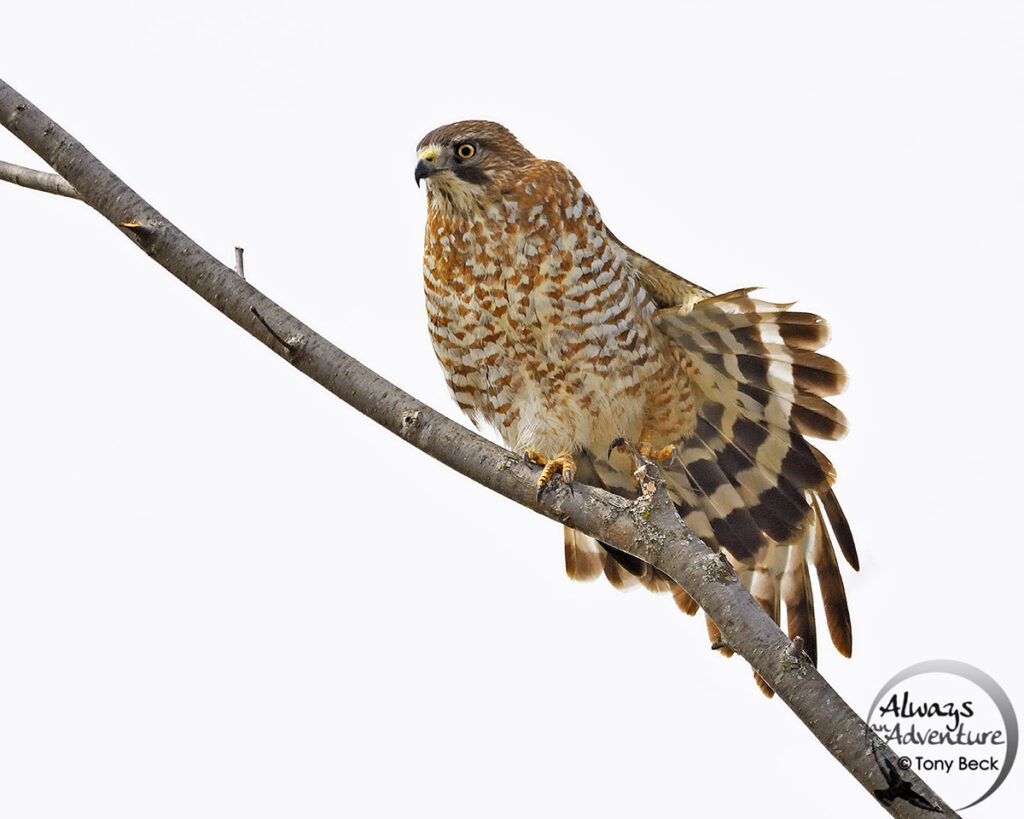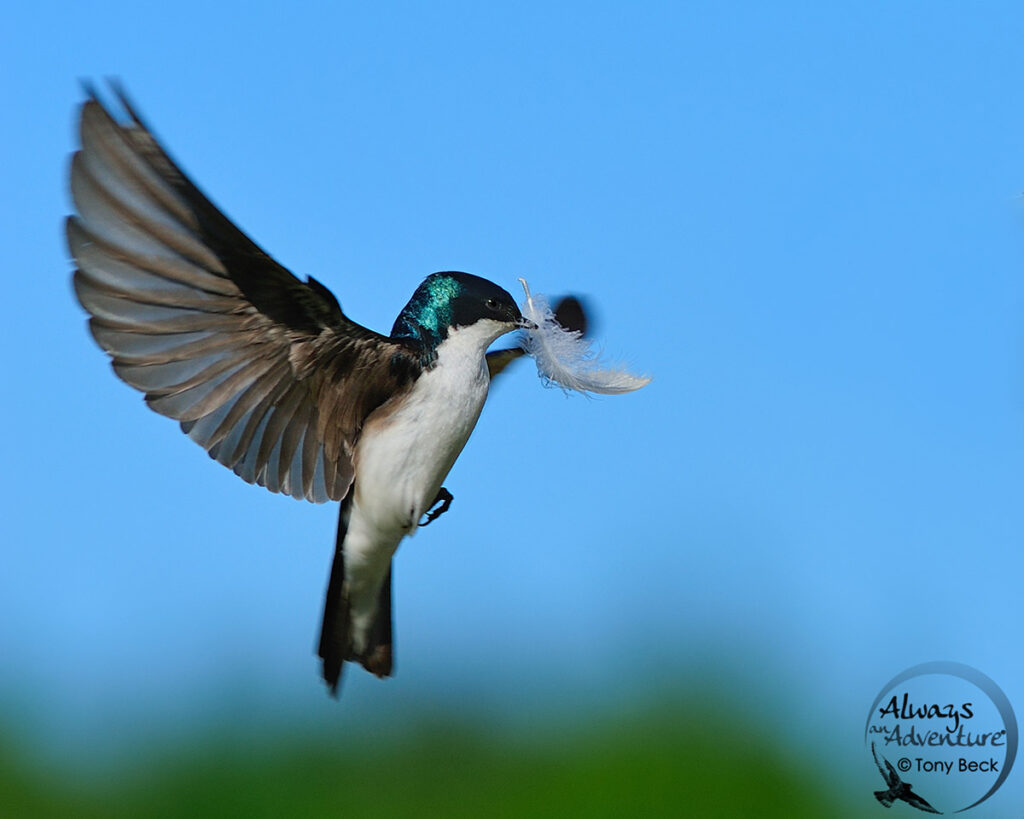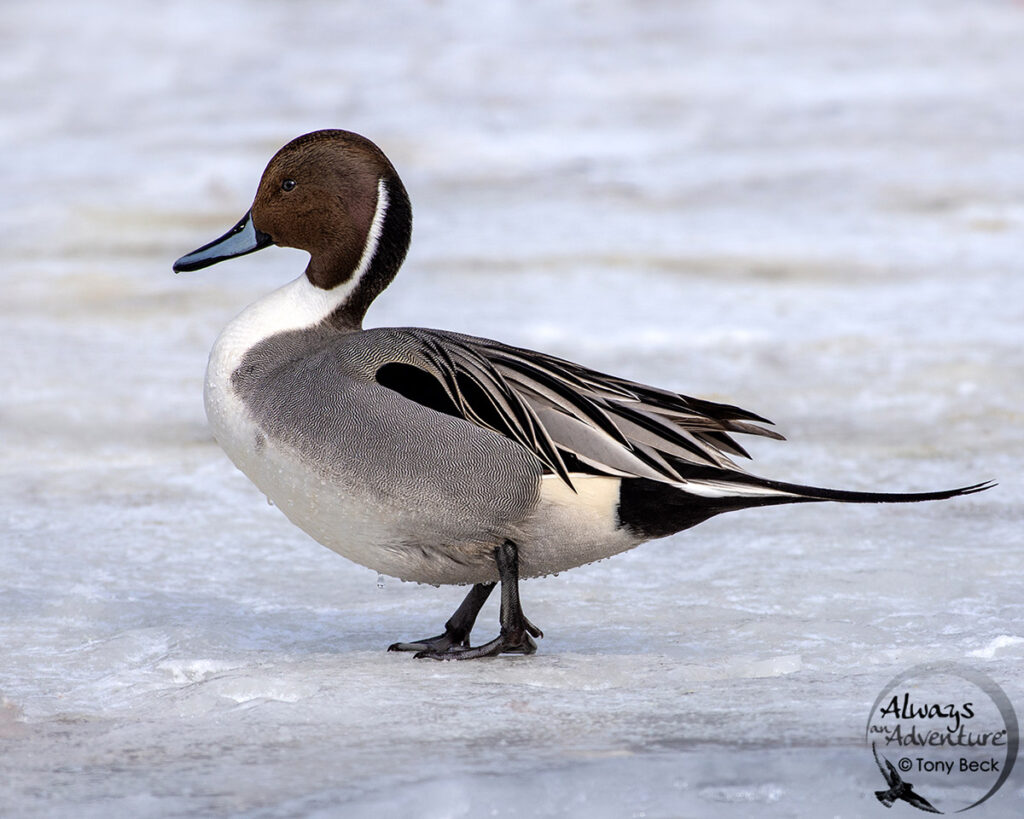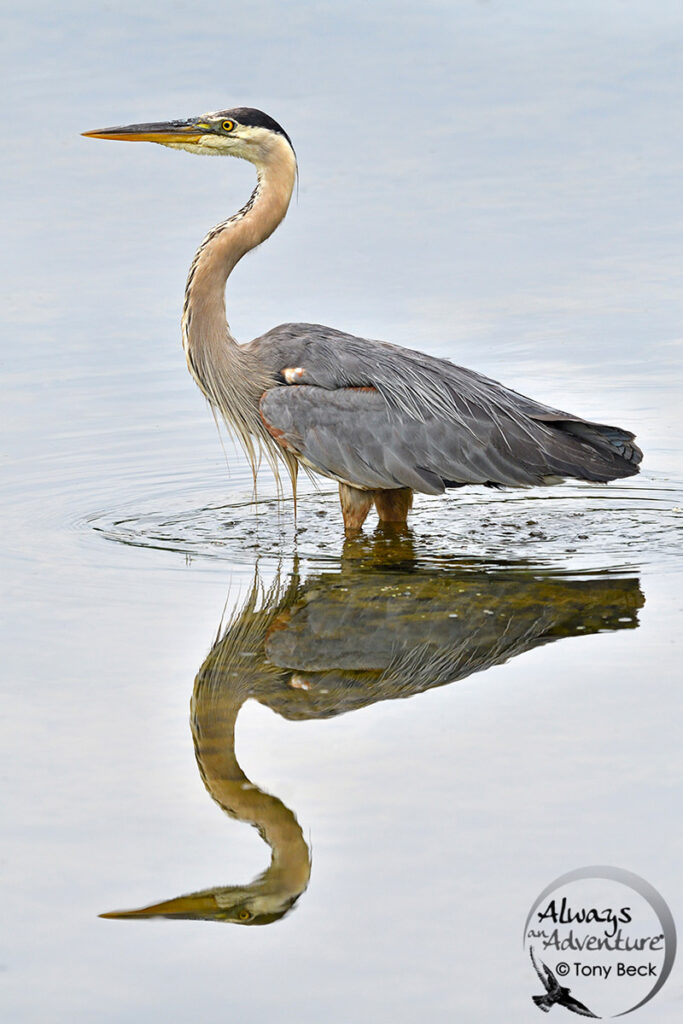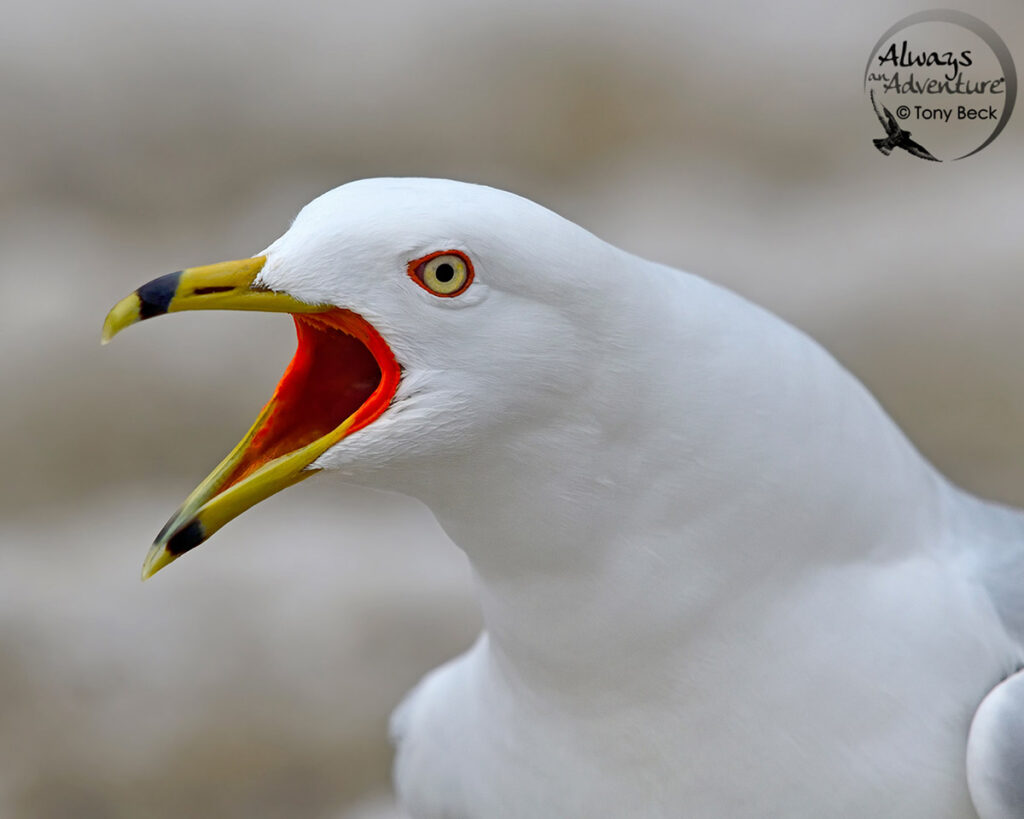American Robin, Ottawa, Ontario – A truly hardy species, each spring, American Robins are among the first birds to sing in suburban backyards.
As winter wanes, the season gives way to warmer temperatures. While the snow melts, plants flourish, animals come out of hibernation, and local environments rejuvenate with an abundance of food. Having spent the cold months south of the Canadian border, migratory birds become eager to return to their breeding grounds.
Greater Snow Geese, Eastern Ontario – Gregarious species like Snow Geese can form enormous flocks at staging areas throughout the country. Sometimes, they form flocks containing tens of thousands of individuals.
Horned Lark, Eastern Ontario – Here in Eastern Ontario, by the end of February, we notice the first sign of spring migration. It’s usually when Horned Larks appear along open-country backroads, coming up from the northern US.
By March, we see many of the first species arriving including ducks, geese, hawks, and several types of songbirds. With a feverishly persistent focus on finding a mate and defending a prime breeding territory, these hardy individuals will tolerate long periods of unseasonal weather just to be first in line for the upcoming mating season. It’s not unusual to find these pioneering individuals arriving with snow still covering nesting sites.
Adult male Red-winged Blackbird, Ottawa, Ontario – Various blackbirds are among the first spring migrants. Many Red-winged Blackbirds return with the first thawing conditions. Even before the females arrive, males will quickly establish territories using their vibrant and animated vocalizations.
Adult Broad-winged Hawk, Ottawa, Ontario – A long-distance migrant that overwinters in Tropical America, Broad-winged Hawks usually arrive in April to set up nesting sites in Canadian forests.
Throughout March and April, we witness a gradual progression of birds moving through our region. While some remain to nest, many others continue en-route to more northern habitats. By the end of April, birds fill the air with their ethereal phrases. We also notice the beginnings of the second wave of migrating birds, most of them coming up from tropical regions. But that’s another story.
Adult Tree Swallow with nest material, Leamington, Ontario – The hardiest of the swallows, they’re usually the first ones to arrive on the breeding grounds. They can survive long periods of cold temperatures by feeding on berries and fruit.
Adult male breeding Northern Pintail, Ottawa, Ontario – Swans, Geese, and Ducks waste no time to return to their breeding habitats. Adult male ducks will be dressed in their showy breeding plumage and actively courting females. They can be fairly frisky, even when surrounded by ice and snow.
Adult Great Blue Heron, Ottawa, Ontario – Regardless of snow cover, these large birds return to Heron Rookeries before the end of April. Sometimes, the first ones need to deal with snow-filled nests – a small price for owning the colony’s premier nesting spot.
Adult breeding Ring-billed Gull, Ottawa, Ontario – It’s not easy to get excited about gulls. However, in early spring, they arrive dressed in their immaculate plumage. Noisy and active, they can be very attractive, colourful, and photogenic.
ABOUT THE AUTHOR
Tony Beck is an award-winning, Nikon Ambassador, Vortex Ambassador, and freelance photographer based in Ottawa.
He teaches birdwatching and nature photography courses.
Follow Tony’s adventures at www.AlwaysAnAdventure.ca



